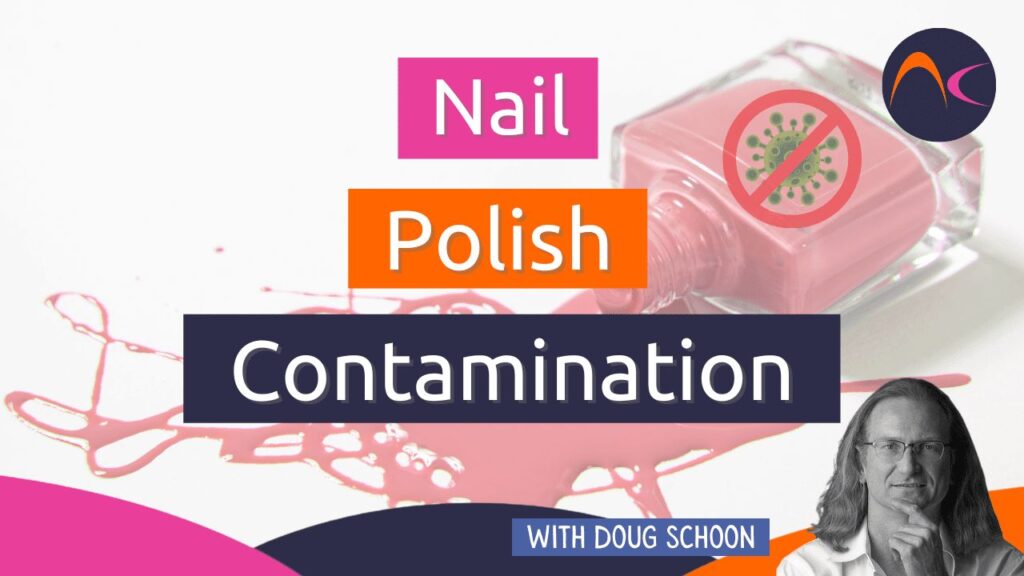Is nail polish contamination a thing? Can you contaminate your nail polish by using it on someone with a nail fungus?
All professional salon nail polishes are designed to be applied to normal, healthy nails and should not be applied to visibly infected nail plates. Nail polish should never be used to cover up an active nail infection of any type. Studies conducted by the Nail Manufacturers Council on Safety (NMC), which is a part of the Professional Beauty Association, demonstrated that nail polish does not harbor infectious bacteria or fungi when properly used. In other words, disease-causing organisms, which are called pathogens, cannot live or grow inside nail polish. This includes fungi, bacteria, and viruses. Why? There are three main reasons:
First, nail polish contains no water, and all pathogens must have water to survive.
Second, nail polish contains no nutrients or food that pathogens can use. Like all living things, including pathogens, nutrients are required for growth and reproduction.
Third, the solvents in the nail polish attack and break apart the pathogens’ cell walls which kills them with amazing efficiency. The studies conducted by the Nail Manufacturers Council on Safety confirmed this. Their study demonstrated that nail polish will not harbor pathogens and that nail polish aggressively kills common salon pathogens that could be accidentally introduced into the polish. This indicates that nail polish can be shared with other clients in the salon without concern. However, this is true for healthy nails that aren’t visibly infected.
Here’s an important word of caution. These study results may not apply when nail plates are visibly infected. Visible infections can contain tremendous amounts of bacteria or fungi. Thousands of times more than would ever be found on a natural nail plate with a healthy appearance. This means that visible infections are in a class of their own and should be carefully avoided. Therefore, nail polish contamination is possible.
So, to be on the safe side, any use of nail polish on visibly infected nail plates should also be avoided. In other words, if you accidentally brush over a visible infection, my own recommendation is the same as that of the Nail Manufacturers Council on Safety: Out of an abundance of caution and keeping the client’s protection in mind, the nail polish bottle should be properly discarded into the trash and not given to the client either.
While sharing nail polish with healthy individuals during a salon visit shouldn’t pose a contamination risk, it’s important to consider another factor: nail polish shelf life. Nail polish, like any other beauty product, does have a lifespan. Though unopened bottles can last upwards of 5-8 years, once opened, their effectiveness and safety can diminish over time. Using expired polish may lead to streaky application, chipping, or even skin irritation. To ensure optimal results and hygiene, it’s crucial to regularly check your polish collection and discard anything past its prime.


